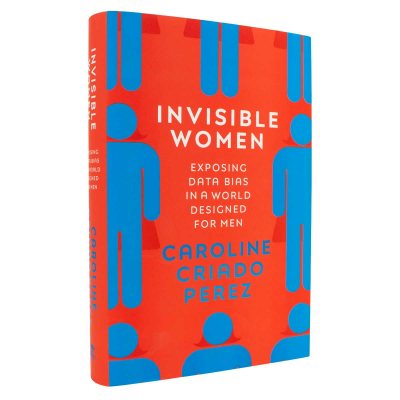

We have quantum computers shaping all sorts of things in our life. GARCIA-NAVARRO: One of the things that I found interesting in your book, among many, is that obviously, data in the modern world is so important. So the only way I think you can really explain it is this incredibly pervasive cultural bias that we just don't realize that we're forgetting women. No one wants their mum to get into a car and be in much more danger than they are. So there were basically just all these ways that we have designed a car to ignore female bodies. And we haven't developed a seatbelt to account for pregnancy. They have to sit much further forward in order for their legs to be able to reach the pedals. Women often don't sit in what's called the standard seating position. It doesn't account for things like the differences between male and female pelvises. So the most commonly used car crash test dummy is based on the fiftieth percentile male, and that is too tall and too heavy. Explain why.ĬRIADO-PEREZ: So essentially, it's because we've designed the car around a typical male body. You write in your book - for example, you cite that when a woman is involved in a car crash, she is 47 percent more likely to be seriously injured and 17 percent more likely to die than a man. But for all sorts of words, like participant, user, researcher, all of which are supposedly gender-neutral words, women are much more likely to draw men as well. They were - it was about 50/50 men and women. And, you know, women were actually pretty good on person. And men drew a man 80 percent of the time when they heard this word. One of the studies that came across in the book got people to draw what they pictured when they were told a list of gender-neutral words, one of which was person. So you have to sort of think about, well, why is this happening? Why are we not representing women? And it seems to tie in with the way that when we think of a human being, generally, we think of a man. Can you explain?ĬRIADO-PEREZ: It's really my way of explaining how we've got to this position. GARCIA-NAVARRO: You talk about a world designed by men for men, and you say that that's created a data gap. The idea that this extended to what was sold as objective - the idea of medicine and science, that they were also underrepresenting women - was just mind-blowing to me. We're used to the idea that women aren't represented in our culture and media and politics and films.

have been more likely to die following a heart attack than men. Women are 50 percent more likely to be misdiagnosed when they have a heart attack. But it's not just women - it's also doctors.

So for a lot of women, when they are having a heart attack, they don't even realize they're having a heart attack. So women don't tend to experience chest pain, pain down the left arm. And I was just incredibly shocked that I had never known this, that I hadn't been taught this. GARCIA-NAVARRO: So why did you write this book?ĬRIADO-PEREZ: So the reason I wrote the book, actually, was I discovered that female heart attack symptoms are different to male heart attack symptoms. Caroline Criado-Perez lays it out in her new book "Invisible Women: Data Bias In A World Designed For Men." And she joins us now from London.ĬAROLINE CRIADO-PEREZ: Hello. The cars we buy, the drugs we're prescribed, even the air conditioning at the office - it's all influenced by data, and that data is incomplete thanks to a long legacy of researchers overlooking women.


 0 kommentar(er)
0 kommentar(er)
